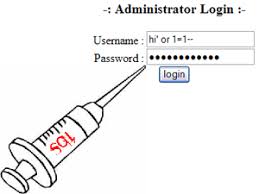- August 10, 2023
- Posted by: team SOUTECH
- Category: Blog, CISCO, Cyber-security and Ethical Hacking Training, Ethical Hacking and Kali Linux Free Training, Intelligence, Security, Technologies

Web Application Penetration Test is a security assessment conducted to identify vulnerabilities and weaknesses in a web application. It involves simulating real-world attacks to assess the application’s security posture, detect potential flaws, and provide recommendations for remediation.
Case Study: A group of students passionate about cybersecurity is tasked with conducting a penetration test on a popular e-commerce website. They perform comprehensive reconnaissance, identifying potential vulnerabilities. Using automated scanners and manual techniques, they uncover SQL injection and XSS vulnerabilities. The students successfully exploit these vulnerabilities, gaining unauthorized access to the website’s database and injecting malicious scripts. They document their findings, providing detailed steps to reproduce the vulnerabilities and recommend measures to remediate them.
Step-by-step instructions:
1. Define the scope: Determine the target web application or system that you have permission to conduct a penetration test on. Ensure proper authorization and informed consent.
2. Reconnaissance and information gathering:
a. Use open-source intelligence (OSINT) techniques to gather information about the target, such as domain names, IP addresses, and associated services.
b. Employ tools like WHOIS lookup, DNS enumeration, and website crawling to identify potential attack vectors.
3. Vulnerability scanning:
a. Utilize a web vulnerability scanner like OWASP ZAP (https://www.zaproxy.org/) or Burp Suite to automatically scan the target for common vulnerabilities, such as SQL injection, cross-site scripting (XSS), or insecure configurations.
b. Analyze the scan results and prioritize vulnerabilities based on their severity and potential impact.
4. Manual penetration testing:
a. Conduct manual testing to identify and exploit specific vulnerabilities not covered by automated scanning.
b. Test for vulnerabilities like authentication bypass, session management issues, or business logic flaws. c. Utilize tools like SQLMap, XSStrike, or Metasploit for manual exploitation.
5. Exploitation and proof of concept:
a. Exploit the identified vulnerabilities to gain unauthorized access, escalate privileges, or manipulate data.
b. Document the steps taken to demonstrate the impact of the vulnerabilities and gather evidence.
6. Post-exploitation and reporting:
a. Document all findings, including vulnerability details, exploitation techniques, and potential risks.
b. Provide recommendations for remediation, including specific actions to address each vulnerability.c. Prepare a detailed report summarizing the penetration test, its outcomes, and suggested mitigations.




